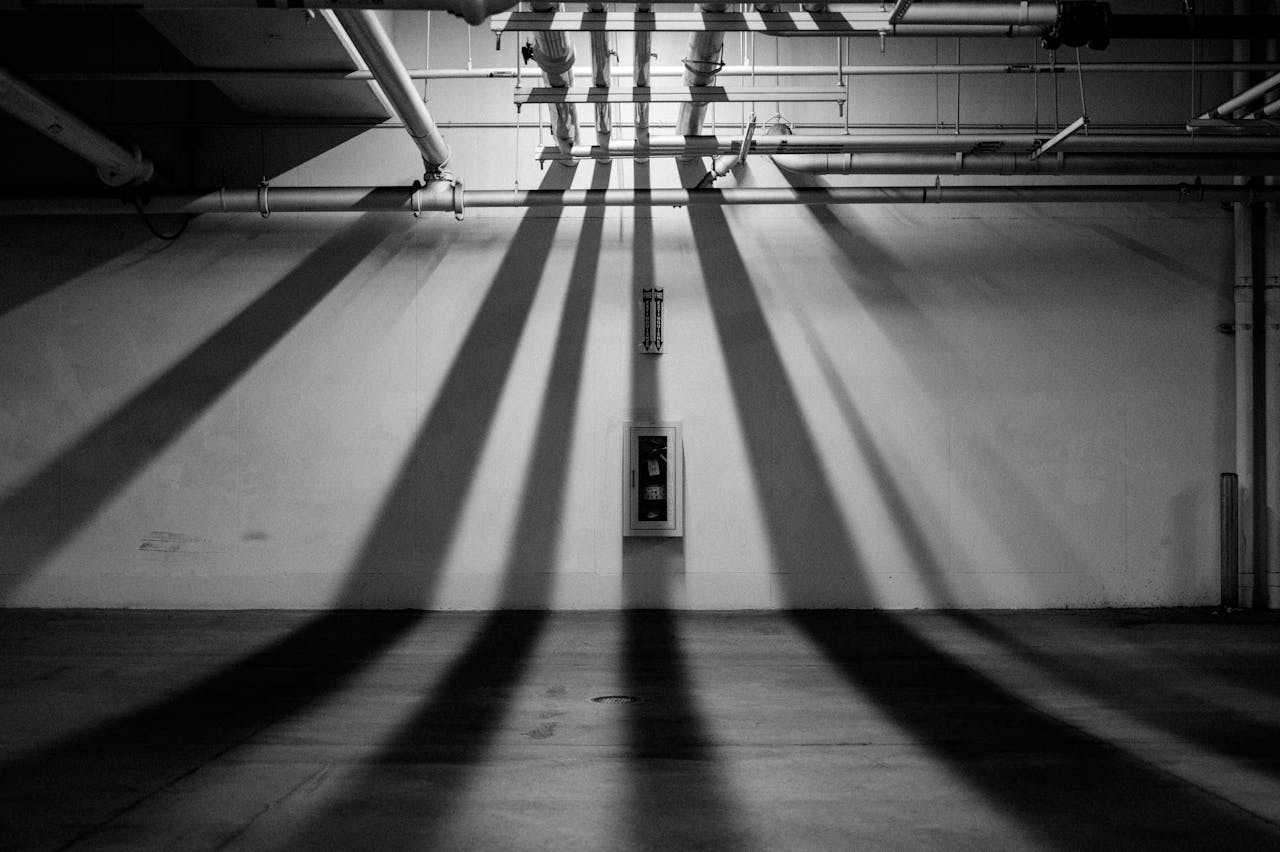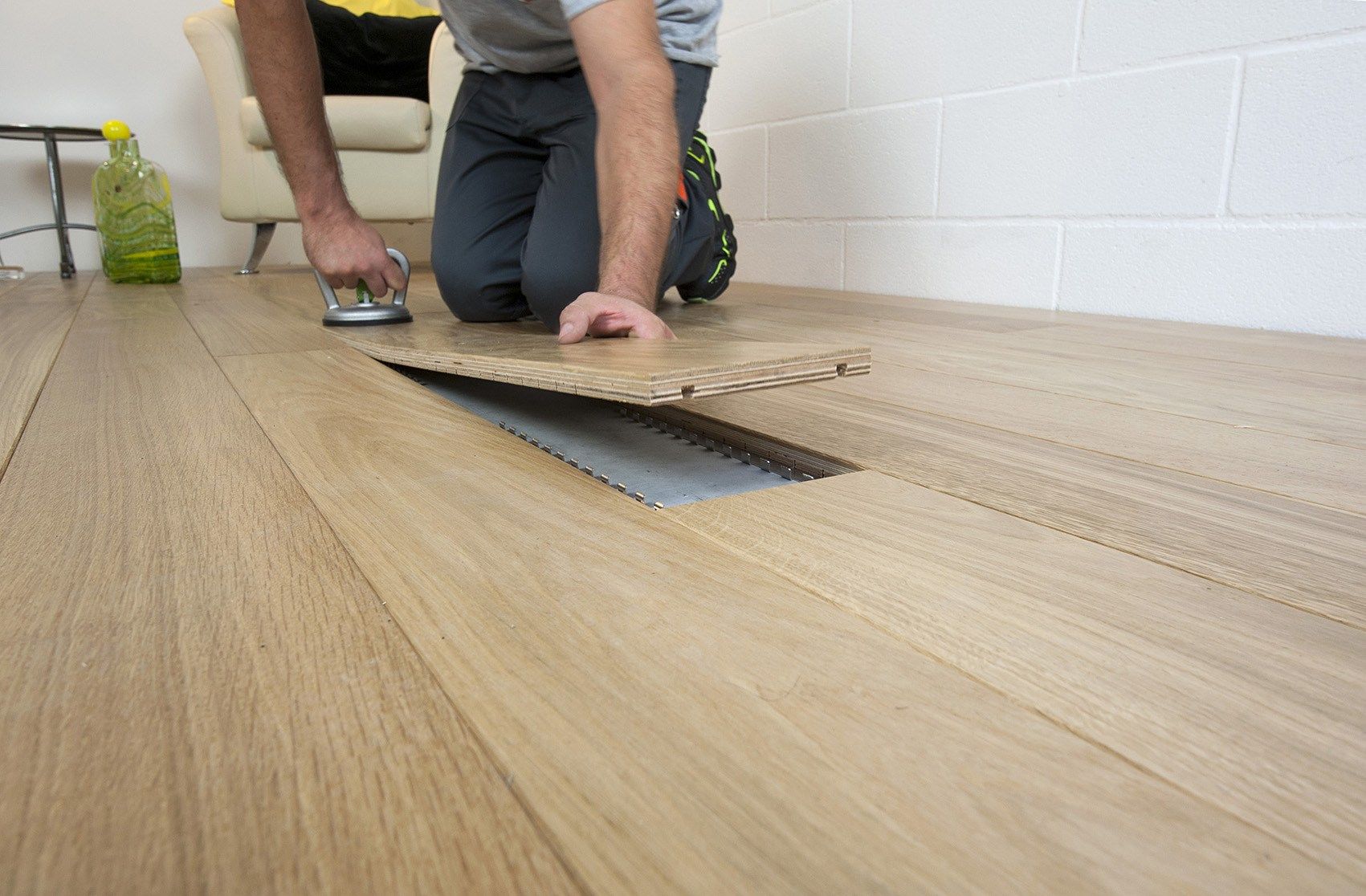SPC (Stone Plastic Composite) flooring offers luxurious appearance, durability, and low maintenance. Lately SPC Flooring Installation has been gaining attention for its benefits for homeowners and business owners, providing flooring solutions with stunning designs and patterns that inspire interior redesigns.
It’s strong and has durability, withstanding scratches, making it ideal for high-traffic areas. Its waterproof nature makes it perfect for moisture-prone spaces like bathrooms, basements, and kitchens, ensuring longevity and peace of mind. Additionally, SPC Flooring is environmentally friendly, with a manufacturing process that involves fewer harmful chemicals and is recyclable.
Although it has many benefits, its improper installation can lead to problems. This blog will talk about the mistakes people make when installing it and also guide you through the alternate and best SPC Flooring Installation process.

Don’t Do These 7 Mistakes While SPC Flooring Installation
Not Getting the Subfloor Ready
One of the most important parts of installing SPC flooring is getting the subfloor ready. If you skip this step, your new floors might end up uneven, squeaky, or wearing out too quickly. Before you lay down the SPC planks, the subfloor should be clean, dry, and flat. This will give your new floors a solid base to sit on.
Not Letting the Flooring Adjust
SPC flooring installation needs time to adjust to the room where it will be installed. This means letting the planks sit in the room for a while to get used to the temperature and humidity levels. Doing this helps prevent the flooring from expanding or contracting later on. Follow the manufacturer’s instructions on how long to let the flooring acclimate to avoid any issues.
Not Leaving Space for Expansion
When installing SPC flooring, it’s important to leave gaps around the edges and between rooms. These gaps let the floor expand and contract with changes in temperature and humidity. If you don’t leave enough space, the flooring might buckle, warp, or shift over time. Follow the manufacturer’s guidelines for how big these gaps should be to keep your SPC floors in good shape.
Not Installing Click-and-Lock Flooring Correctly
Some SPC flooring uses a click-and-lock system to securely fit the planks together. It’s important to use the right technique when tapping or locking the planks during installation. Using the wrong method can damage the planks and make the locking system weak, causing the flooring to become loose or unstable.
Cutting and Fitting SPC Flooring
When installing SPC flooring, it’s important to cut and fit the planks carefully for a smooth, seamless look. Rushing or not fitting properly around doorways, corners, or obstacles can result in noticeable gaps and affect how your floors look overall. Take your time to ensure precise cuts and fittings to achieve a polished appearance.
Not Following Manufacturer’s Instructions
Every SPC flooring product comes with usual manual from the manufacturer on how to install it correctly. Ignoring or not following these guidelines can cancel the warranty and cause problems during installation. Always refer to the manufacturer’s instructions to make sure you install the flooring properly and keep your warranty valid.
Not Taking Time for Installation
Don’t rush when installing SPC flooring. If you take shortcuts or hurry, you might make mistakes and end up with a less-than-perfect result. Installing SPC flooring properly requires patience and paying attention to details. Plan carefully, prepare thoroughly, and take your time during installation to get the best outcome possible.
Now to avoid these common mistakes during SPC flooring installation, follow the process below for an easy and smooth installation.
Things You Need for SPC Flooring Installation

When upgrading to stylish SPC flooring, you’ll need a few essential tools for a smooth installation process. Installing SPC flooring takes time, technique, and the right tools.
Safety Gear
Start with safety first. Use knee pads for comfort since you’ll be on your knees a lot. Also, wear work gloves to protect your hands.
Measuring Tools
You’ll need a measuring tape, chalk, pencil, or marker to mark where to cut the planks and keep everything in line.
Preparation Tools
Have a pry bar or crowbar to prepare the ground. Vacuum cleaner will clean the subfloor and surfaces. A moisture barrier adds extra protection.
Installation Tools
Get basic tools like a knife, floor cutter, and tap the block to secure the planks together. Use spacers to keep gaps between the planks consistent.
Pre-Installation
Getting important things ready before SPC flooring installation is super important. It helps make sure the job turns out great and lasts a long time.
Prepare the Subfloor
Start by cleaning the subfloor thoroughly and ensuring it’s completely dry to prevent issues like bulging or hydrostatic pressure. Check for uneven surfaces or cracks and fill them with cement-based patches for a smooth foundation. If you have existing flooring, ensure no nails are sticking out above the surface. Secure any loose parts by nailing them down. Keep in mind that minor repairs may incur extra time and cost from your installer. Your subfloor should be clean, dry, smooth, flat, and level, free from oil, paint, dust, grease, wax, chemical substances, mold, and mildew to ensure it’s ready for installing SPC flooring.
Clear Distractions
Before you start installing your new flooring, make sure to remove any obstacles in the way. This includes moving loose furniture and appliances to a different area for the time being. Also, clear out any flooring accessories such as skirting boards or trim that might get in the way of installation. Taking these steps before you begin will make the installation process smoother and help achieve a more professional look when it’s done.
Maintain the Temperature
When preparing for flooring installation, it’s important to control the surrounding temperature and humidity in your room. Keep the room temperature stable, with no more than a 5°C fluctuation, especially 24 hours before and at least 48 hours after installation. To minimize temperature changes, use shades or curtains to block direct sunlight, especially in areas affected by Easterly or Westerly sunlight, during and after installation while the adhesive sets. The ideal room temperature for installation should be between 18°C and 27°C. Ensure the subfloor temperature is at least 15°C for a successful installation. Keeping these conditions steady will help ensure a smooth and effective flooring installation process.
Give it Time to Adjust Temperature
Before installing your new flooring, allow it to acclimatize to the surrounding conditions for at least 24 hours. This means letting the flooring adjust to the temperature and humidity of the installation area. Avoid storing the flooring in temperatures below 2°C or above 40°C to prevent damage. When storing the SPC planks, always keep them flat and not upright to maintain their shape and integrity during acclimatization. Following these steps will ensure that your flooring is ready for installation and performs well in its new environment.
Get all the Tools
Before you begin installing SPC flooring, get all the necessary tools ready to avoid interruptions during the installation process. Gather tools such as an SPC cutting knife, bolster chisel, scissors or Stanley knife, measuring tape, pencil, straight edge, SPC adhesive, lining paper, and a homemade scribing gauge. Having these tools on hand will streamline the installation and prevent the frustration of stopping midway to search for missing items.
Do Careful Measurement
Before you start installing SPC plank flooring, it’s crucial to plan your layout carefully. Take precise measurements and mark your layout accordingly. If you’re using SPC plank flooring, adjust your layout to achieve a balanced look throughout the space. Don’t skip this step, as a well-planned layout is essential for achieving the desired visual appearance once the flooring is installed. Proper planning and marking will help ensure a neat and professional finish for your project.
Now that you know the prerequisites, it’s important to note that the SPC plank floor installation method depends on the type of flooring you have. Understanding your flooring type is essential for choosing the right installation method.
Let’s discuss each one below.
Click-lock SPC Plank
To install click-lock SPC plank flooring easily as a beginner, start by ensuring your planks have both long and short sides designed for easy clicking together. Begin from a corner of the room and measure and cut as needed to fit your space. When locking the planks, press down gently with your palm for a secure connection.
Leave a small 2mm gap at the walls to allow for expansion. Avoid using a hammer or tapping block to prevent damaging the click connection. Some SPC flooring brands have planks that can be installed horizontally, making it simpler for narrow or tricky spaces.
Glue Down SPC Plank
When installing SPC plank flooring using the glue down method, it’s crucial to manage moisture levels in your subfloor to prevent problems like installation failure or warranty issues. Check the moisture content based on your subfloor type—below 2.5% for cement, less than 0.5% for anhydrite, and not exceeding 10% for wood. Always use the recommended adhesive and moisture barrier specified by your flooring manufacturer, and avoid mixing different adhesive products.
Start laying planks from one corner, spreading gently to avoid using excessive force for quick bonding. Avoid over-strapping with clamps or straps, which can cause floor structure issues like seam peaking or misalignment. Use the right size trowel to ensure proper glue-to-board transfer, and consult your adhesive manufacturer for guidance on trowel size, moisture barriers, and adhesive set time.
Permanent Full Spread SPC Sheet
For permanent full spread SPC sheet flooring installation, apply pressure-sensitive adhesive before laying the sheet. Let the adhesive dry slightly before placing the sheet to avoid excessive transfer. Position the sheet carefully to prevent wrinkles or bubbles.
When cutting, be gentle to avoid tears and ensure a smooth finish without folding or creasing. Unlike other methods, start installing SPC sheets from the center of the room for best results. Rolling pin or floor roller will help you remove air and ensure a secure bond.
Releasable SPC Sheet
Releasable SPC sheet flooring installation is a common method that differs from permanent installation mainly in the type and application of adhesive. To avoid bubbling, don’t lay the sheet when the adhesive is wet, but also don’t wait too long for it to dry completely. The adhesive should be tacky when placing the SPC sheet, with no adhesive transferring underneath.
Start from the center of the room for installation. Releasable installation is versatile for various subfloors due to its thin, removable adhesive layer. Avoid placing heavy objects or built-in cabinets on top of releasable SPC sheets.
Loose-lay SPC Sheet
Loose-lay sheet SPC installation is a DIY-friendly method using double-sided acrylic tape, allowing easy correction of mistakes or subfloor issues by rolling back the sheet. It’s suitable for surfaces like lightweight concrete or particleboard and is hassle-free for removal. To enhance appearance, align the pattern with the dominant wall.
However, this method isn’t as durable as fully adhered installation, so it’s best for low-traffic areas without heavy fixtures on top. Avoid loose-lay installation if your area exceeds two full material drops, the SPC sheet is rolled face-in, or if the installation area is longer than 30 inches, complex, or if the sheet is distorted or damaged during handling.
Final Thoughts
After installing your SPC flooring, maintain stable moisture levels and temperature for 48 hours to stabilize and enhance durability. If professionals installed the flooring, conduct a thorough final inspection for secure installation. Keep any leftover planks or tiles for future repairs. Clean the installation site by sweeping away dirt and dust. For glue-down installations, remove adhesive traces using mineral spirits or a manufacturer-recommended remover with a cloth. Mop the floor regularly with neutral detergent to clear adhesive residues.
To avoid mistakes in SPC flooring installation, it’s important to hire experienced professionals like Cozy Flooring. Chic Floor’s skilled team ensures good quality and keeps clients happy with our service.
Also Read:
The Ultimate Guide to SPC Flooring: Enhancing Your Interior Design with Durability and Style
Comparing SPC Flooring Prices: Dubai vs. Global Markets
Why SPC Flooring for Commercial Spaces is the Best Choice




